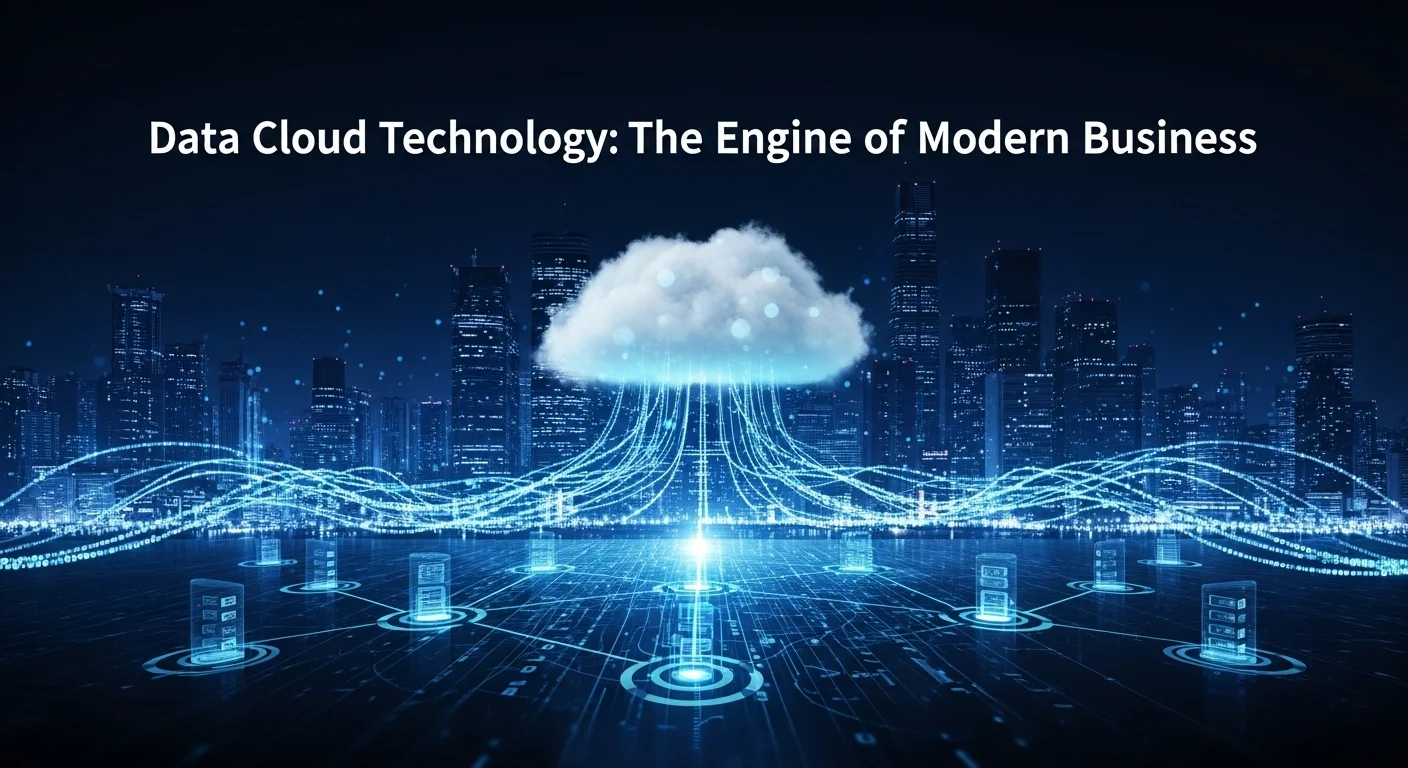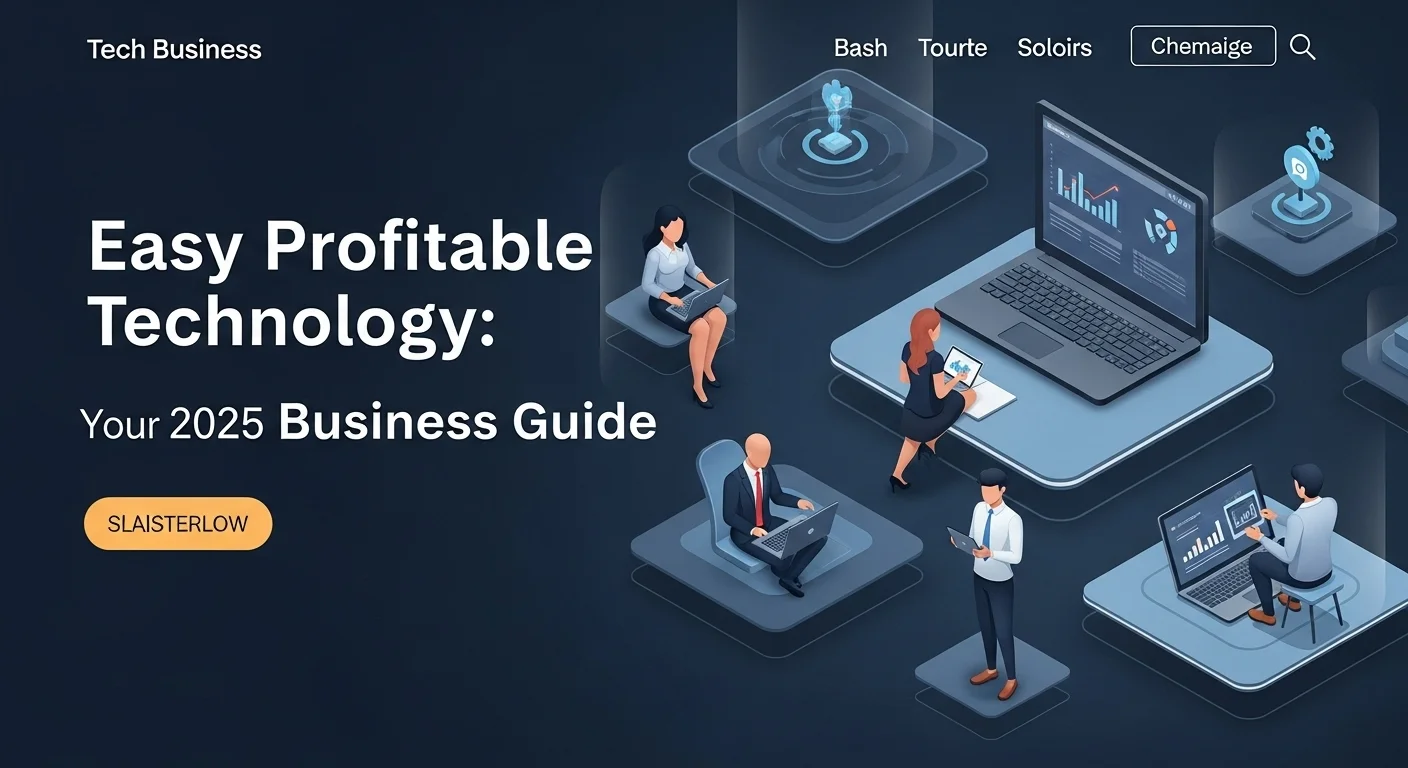What is a Data Cloud? A Personal Guide to the Tech Powering Modern Business

Executive Summary
In all my years as a data strategist, I've seen one thing separate market leaders from everyone else: how they handle their data. It's their most valuable asset. That's where the Data Cloud comes in, and trust me, it’s far more than just storage. Think of it as a central nervous system for your entire organization, breaking down those frustrating data silos and creating one source of truth. It's the foundation for the smart analytics, AI, and business intelligence tools that are reshaping industries. In this guide, I'll walk you through everything you need to know—from the basic concepts to the strategic steps for harnessing its power, sharing insights I've picked up along the way.
Table of Contents
Table of Contents
What is a Data Cloud and Why Does It Matter?
In today's business world, we hear the term 'Data Cloud' everywhere. But what does it actually mean? I've spent my career helping companies untangle their data, and I can tell you this: a Data Cloud is not just another buzzword. At its heart, it's a unified architecture designed to bring all of an organization's data together. For years, businesses have been plagued by 'data silos'—imagine critical information being trapped on separate islands. The sales team has its data, marketing has its own, and finance has yet another. A Data Cloud builds bridges between these islands, creating a single, reliable source of information for everyone.
The real magic of a Data Cloud lies in its foundation. It's built on the incredible power of massive cloud data centers from providers like AWS, Google Cloud, and Azure. This gives it virtually unlimited scale. I remember the old days of on-premise servers where running a big report meant everyone else had to wait. With a Data Cloud, you can scale resources up or down in minutes, paying only for what you use. This elasticity is crucial for handling the sheer volume and speed of modern data. It makes the powerful combination of big data analytics and cloud computing accessible not just to massive corporations, but to any business ready to grow. It’s about turning raw data into actionable intelligence, efficiently and affordably.
The Architectural Advantage: Beyond Warehouses and Lakes
To really get why the Data Cloud is such a leap forward, it helps to know what came before. We had data warehouses, which were great for structured data like sales numbers, but rigid. Then came data lakes, which could store anything—images, logs, videos—but often became messy 'data swamps' where information was hard to find and analyze.
The modern Data Cloud, often called a 'Lakehouse,' combines the best of both. I've seen firsthand how platforms like Snowflake and Databricks revolutionized things by separating storage from compute. This is a game-changer. It means the marketing team can run a huge analysis, finance can pull critical reports, and the data science team can train an AI model, all at the same time, using the same data, without slowing each other down. This single innovation unlocked a new level of collaboration and efficiency, making unified analytics a reality.
Real-World Applications and Transformative Benefits
The impact of this technology is everywhere. I've worked with retailers who build a complete 'Customer 360' view by merging purchase history, website clicks, and loyalty program data. The result? Incredibly personalized marketing that actually works. In finance, it’s used for real-time fraud detection, analyzing thousands of transactions per second. In healthcare, it's accelerating research by safely combining patient records with clinical trial data.
The benefits driving this shift are compelling:
- Data for Everyone: It's no longer just for data scientists. With user-friendly tools, employees across the company can access data and make smarter decisions on their own. We call this the democratization of data.
- Speed and Innovation: When you can analyze information quickly, you can spot trends faster, anticipate what customers want, and test new ideas in days instead of months. The platform becomes your innovation lab.
- Simplified Security & Governance: Having all your data in one place makes it much easier to protect. Top platforms have built-in tools for managing access, ensuring compliance with rules like GDPR, and keeping information secure. Even companies with the strictest requirements can use a hybrid approach with private cloud data storage for their most sensitive assets.
- Smarter Spending: The pay-as-you-go model is a huge win. I've helped clients slash their infrastructure costs by moving away from paying for idle hardware and instead matching their spending directly to their needs.
Ultimately, a Data Cloud turns data from a static resource locked away in a database into the dynamic engine that drives your business forward. Understanding this technology isn't just for IT folks anymore; it's a fundamental part of modern business strategy.

Your Complete Guide to Implementing a Data Cloud Solution
Making the move to a Data Cloud is one of the most strategic decisions a modern business can make. But it's more than just picking a technology; it's about building a foundation for the future. In my experience guiding companies through this process, success comes from a clear plan that connects the tech to real business goals. This guide is my playbook for doing just that.
Choosing Your Platform: A Practical Comparison
The market has some heavy hitters, and the right choice depends entirely on your needs. Here’s my take on the main players:
1. Snowflake: The User-Friendly Powerhouse
Snowflake really nailed the concept of the 'Data Cloud.' Its key strength is the complete separation of storage and compute, which means incredible performance without a lot of manual tuning. I often recommend it to teams who want powerful analytics with a focus on ease of use. Its data sharing marketplace is also a huge plus, allowing you to securely access data from partners or third-party providers without clunky file transfers.
2. Databricks: The AI & Data Science Champion
If your work involves heavy data engineering or advanced machine learning, Databricks is often the answer. Born from the creators of Apache Spark, it’s built on an open 'Lakehouse' architecture that excels with all data types, including unstructured video or text. It's a favorite among my data science colleagues because of its collaborative notebooks and flexibility. The trade-off? It can have a steeper learning curve and requires a bit more hands-on management.
3. Google BigQuery: The Serverless Simplifier
For businesses already deep in the Google Cloud ecosystem, BigQuery is a natural fit. Its serverless nature is its superpower—Google handles all the resource management behind the scenes, which simplifies operations immensely. It’s incredibly fast for huge queries and has fantastic built-in machine learning and geospatial tools. The integration with the rest of Google's suite makes it a seamless end-to-end solution.
4. Amazon Redshift & Azure Synapse Analytics
These platforms are the established giants from AWS and Microsoft. Redshift is a mature, powerful data warehouse that has evolved to become more flexible, allowing queries on data stored directly in Amazon S3. Synapse is Microsoft's all-in-one platform, bundling warehousing, big data processing, and integration tools. I find these are often the best choice for organizations heavily standardized on AWS or Azure, as they offer deep integration and leverage the provider's massive cloud data center infrastructure.
The Implementation Journey: My Phased Approach
Migrating to a Data Cloud is a major project. I always break it down into these manageable phases:
Phase 1: Strategy First
Before you do anything technical, ask: 'What problem are we solving?' Better customer insights? A more efficient supply chain? Get buy-in from leadership and key departments. This is also when you plan your security and governance. If you have highly sensitive data, this is where you map out your private cloud data storage strategy within a hybrid model.
Phase 2: Know Your Data
This is often the hardest part. You need to create an inventory of all your data sources—every database, app, and spreadsheet. Then comes the work of cleaning and standardizing it. I can't stress this enough: garbage in, garbage out. A successful project depends on high-quality, consistent data.
Phase 3: The Move (ETL to ELT)
The modern way to move data is called ELT (Extract, Load, Transform). Instead of transforming data before loading it, we load the raw data directly into the Data Cloud and then use its powerful engine to transform it. This approach is far more flexible and scalable, taking full advantage of the power of cloud computing for big data analytics.
Phase 4: Create Value
With your data clean and in one place, the fun begins. Your analytics teams can build dashboards, and your data scientists can train models. But don't stop at insights. The goal is 'data activation'—pushing that intelligence back into your business systems. For example, automatically sending a list of high-value customers from your Data Cloud to your marketing platform for a special campaign.
Phase 5: Optimize and Grow
A Data Cloud is a living system. I always advise clients to continuously monitor performance and costs. More importantly, focus on building a data-driven culture through training and support. The technology is just a tool; its true power is unlocked when your people use it to ask better questions and find smarter answers.

My Top Tips for Getting the Most from Your Data Cloud
Once your Data Cloud is up and running, the real work begins. It’s not a 'set it and forget it' solution. Over the years, I've seen what separates the companies that get a massive return on their investment from those that just get by. Here are my hard-won strategies for making your Data Cloud a true engine for growth.
1. Become a Master of Cost Control
The pay-as-you-go cloud model is fantastic, but it can lead to surprise bills if you're not careful. Here’s my go-to checklist for keeping costs in check:
- Start Small, Scale Smart: Don't fire up the biggest compute cluster available. Start with a smaller size and only increase it if queries are running slow. I've seen teams cut their bills in half just by right-sizing their resources.
- Use Auto-Suspend Religiously: This is the single most effective cost-saving feature. Set your compute resources to automatically shut down after a few minutes of inactivity. You only pay for what you actively use. It’s a no-brainer.
- Give Workloads Their Own Space: Don't have your data loading processes, BI dashboards, and data science experiments all competing for the same resources. By creating separate clusters for each, you prevent bottlenecks and can clearly see which department is spending what.
- Set Up Budget Alerts: Don't wait for the end-of-the-month invoice. Use the platform's tools to monitor spending in real-time and set alerts that notify you when you're approaching your budget limits.
2. Tune for Peak Performance
A fast platform can be made even faster. The biggest performance bottleneck I see isn't the technology; it's how it's used.
- Write Clean Queries: A sloppy `SELECT *` on a massive table is a resource killer. Train your teams to only select the columns they need and to filter data as early as possible in the query.
- Organize Your Data Intelligently: Think about how your users will query the data. If they're always looking at sales by date, then clustering your data by date can make those queries run dramatically faster because the system doesn't have to scan the entire table.
- Use Materialized Views for Repetitive Work: If you have a popular dashboard that runs the same complex query over and over, create a materialized view. This pre-calculates the results and stores them, making the dashboard load almost instantly.
3. Build a Foundation of Trust with Governance
If your team doesn't trust the data, your entire investment is wasted. A solid governance plan is non-negotiable.
- Enforce Least Privilege Access: No one should have access to data they don't need for their job. Use role-based controls to make managing permissions simple and auditable.
- Protect Sensitive Information: Use data masking to hide sensitive PII. This allows analysts to work with the data to find trends without ever seeing the raw, private information. This is a great way to use data that would otherwise have to be locked down in private cloud storage.
- Document Everything with a Data Catalog: A data catalog acts as a map for your data, explaining what each dataset is, who owns it, and how reliable it is. This builds incredible trust and accelerates analysis.
- Stay Compliant: Make sure your environment meets all regulatory standards like GDPR or HIPAA. Regularly audit who is accessing what to stay secure and prepared.
4. Cultivate a Data-Driven Culture
The best cloud data tech in the world is useless without people who know how to use it. The combination of big data analytics and cloud computing requires a cultural shift.
- Invest in Your People: Continuous training is essential. Help your team move beyond just using the tools to truly understanding the data and asking the right questions.
- Create a Center of Excellence (CoE): I always recommend forming a central team of experts. They can set best practices, offer support, and guide the company's overall data strategy.
- Showcase Your Wins: When a team uses data to achieve something great, celebrate it! Sharing success stories is the best way to build momentum and get everyone excited about the possibilities.
5. Keep an Eye on the Future
The world of cloud data is moving fast. Here's what I'm telling my clients to watch:
- Generative AI: Your Data Cloud is the perfect fuel for generative AI. High-quality, unified data is exactly what's needed to train LLMs or power RAG systems that give accurate, context-aware answers.
- Data Sharing: Look into your platform's data marketplace. You can access valuable third-party datasets or even create new revenue streams by securely sharing or selling your own anonymized data.
- Real-Time Streaming: The future is real-time. Moving beyond daily reports to live, streaming data enables game-changing applications like instant fraud detection and live inventory management.
By focusing on these strategies, you'll move beyond simply having a Data Cloud to truly leveraging it as the core of your business, driving smarter decisions and building a real competitive advantage.
Expert Reviews & Testimonials
Sarah Johnson, Business Owner ⭐⭐⭐⭐
As a small business owner, I was intimidated by the term 'Data Cloud.' This article broke it down really well. The section on choosing a platform was especially helpful, though I'd love to see a case study for a non-enterprise company.
Mike Chen, IT Consultant ⭐⭐⭐⭐⭐
A solid, well-written guide. I work in IT consulting, and the explanation of the ELT process versus traditional ETL was one of the clearest I've read. It confirms a lot of what we're seeing in the field.
Emma Davis, Tech Expert ⭐⭐⭐⭐⭐
Fantastic and thorough! I'm specializing in cloud architecture, and the tips on cost optimization and performance tuning in Part 3 are pure gold. It’s practical advice you don't always get in textbooks. Bookmarked!



